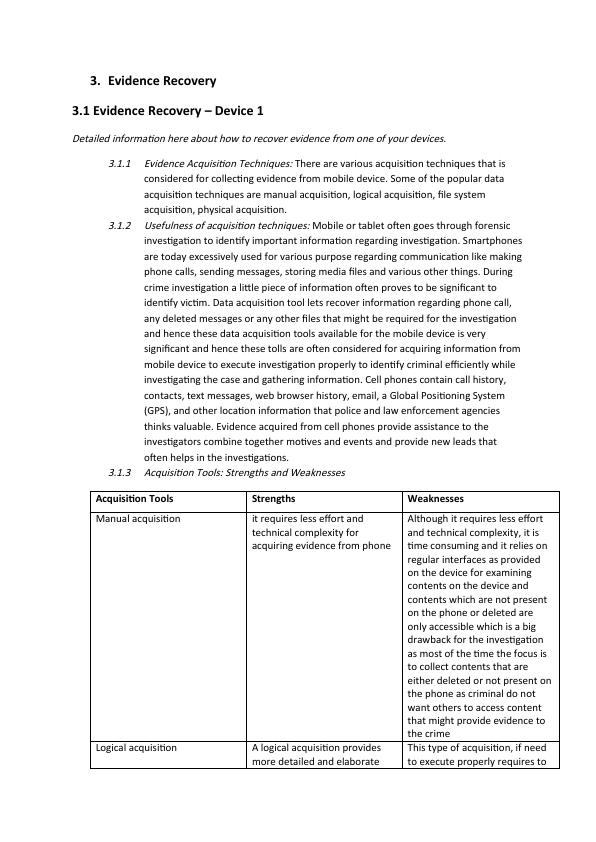Digital Forensic Technology: Evidence Recovery and Future Challenges
Write a report that examines the way that you use your digital technology, consider the implications this could have on evidence recovery, and make predictions about the future of evidence recovery.
8 Pages2390 Words82 Views
Added on 2023-01-13
About This Document
This report discusses digital forensic technology and how it is important in conducting crime investigation. It provides a detailed description of evidence recovery techniques, strengths and weaknesses of acquisition tools, and future challenges in the field. The report also explores the usefulness of acquired evidence in prosecution.
Digital Forensic Technology: Evidence Recovery and Future Challenges
Write a report that examines the way that you use your digital technology, consider the implications this could have on evidence recovery, and make predictions about the future of evidence recovery.
Added on 2023-01-13
ShareRelated Documents
End of preview
Want to access all the pages? Upload your documents or become a member.
Digital Forensic Technology: A Detailed Description and Application in Crime Investigation
|9
|2624
|71
Digital Forensic Technology: Evidence Recovery and Challenges
|10
|2858
|94
Digital Forensics : Assignment
|18
|5256
|724
Electronic Crime and Digital Forensics Assignment 2022
|18
|1486
|14
Computer Forensic Analysis 2022
|15
|1541
|23
Data acquisition methods for digital forensics
|11
|1180
|18



